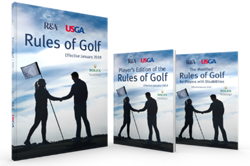April 2022
RULE 5.6 UNREASONABLE DELAY; PROMPT PACE OF PLAY
5.6a Unreasonable Delay of Play
You must not unreasonably delay play, either when playing a hole or between two holes.
Penalty for Breach of Rule 5.6a:
• Penalty for first breach: One penalty stroke.
• Penalty for second breach: General Penalty (Loss of Hole in Match Play and 2 strokes in Stroke Play).
• Penalty for third breach: Disqualification.
If you unreasonably delay play between two holes, the penalty applies to the next hole.
5.6b Prompt Pace of Play
 A round of golf is meant to be played at a prompt pace. Your pace of play is likely to affect how long it will take other players to play their rounds, including both those in the group and those in following groups. You are encouraged to allow faster groups to play through.
A round of golf is meant to be played at a prompt pace. Your pace of play is likely to affect how long it will take other players to play their rounds, including both those in the group and those in following groups. You are encouraged to allow faster groups to play through.
PACE OF PLAY RECOMMENDATIONS – You should play at a prompt pace throughout the round, including the time taken to:
• Prepare for and make each stroke,
• Move from one place to another between strokes,
• Move to the next teeing area having completed the hole.
You should prepare in advance for your next stroke and be ready to play when it is your turn. 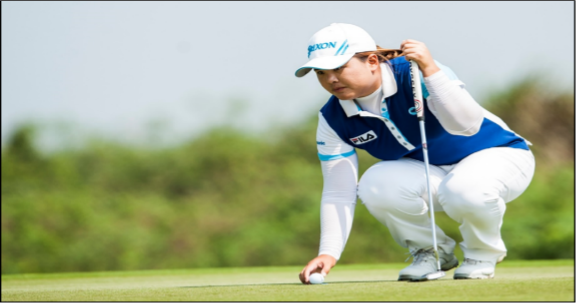
When it is your turn to play:
• It is recommended that you make the stroke in no more than 40 seconds after you are (or should be) able to play without interference or distraction, and
• You should usually be able to play more quickly than that and are encouraged to do so.
 PLAYING OUT OF TURN TO HELP PACE OF PLAY
PLAYING OUT OF TURN TO HELP PACE OF PLAY
In stroke play, play “ready golf” in a SAFE AND RESPONSIBLE WAY.
In match play, you and your opponent may agree that one of you will play out of turn to save time. Otherwise you would not play out of turn in Match Play.

 A “dangerous animal condition” exists when a dangerous animal (such as poisonous snakes, stinging bees, alligators, fire ants, bears, and rutting deer) near the ball could cause serious physical injury to the player if he or she had to play the ball as it lies.
A “dangerous animal condition” exists when a dangerous animal (such as poisonous snakes, stinging bees, alligators, fire ants, bears, and rutting deer) near the ball could cause serious physical injury to the player if he or she had to play the ball as it lies. 
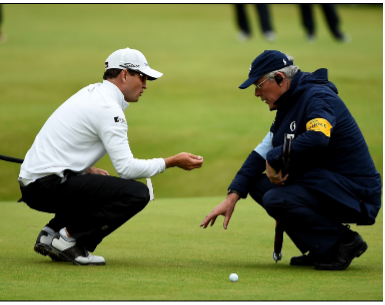 If a ball overhanging the hole is lifted or moved before the waiting time under the Rule 13.3a has ended, the ball is treated as having come to rest:
If a ball overhanging the hole is lifted or moved before the waiting time under the Rule 13.3a has ended, the ball is treated as having come to rest: There is nothing in the Rules of Golf that would prohibit a player borrowing an umbrella from someone else on the course be it another player, official, or spectator. The Rules of Golf even allow you to use an umbrella to protect yourself from the elements while making a stroke but it must be the player holding the umbrella so it only works when tapping in a putt. Under the Rules of Golf you can borrow anything you want from others apart from CLUBS.
There is nothing in the Rules of Golf that would prohibit a player borrowing an umbrella from someone else on the course be it another player, official, or spectator. The Rules of Golf even allow you to use an umbrella to protect yourself from the elements while making a stroke but it must be the player holding the umbrella so it only works when tapping in a putt. Under the Rules of Golf you can borrow anything you want from others apart from CLUBS. 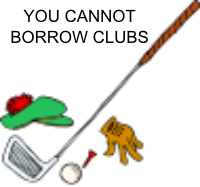
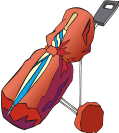 Since 2019 there has been no penalty if a ball accidentally hits or is deflected or stopped by any player, partner, caddie or equipment but you have to play the ball as it lies. (Rule 11.1).
Since 2019 there has been no penalty if a ball accidentally hits or is deflected or stopped by any player, partner, caddie or equipment but you have to play the ball as it lies. (Rule 11.1). At any time, a player may take Stroke-and-Distance relief by adding one penalty stroke and playing the original ball or another ball from where the previous stroke was made. You always have this option no matter where your ball is on the course.
At any time, a player may take Stroke-and-Distance relief by adding one penalty stroke and playing the original ball or another ball from where the previous stroke was made. You always have this option no matter where your ball is on the course.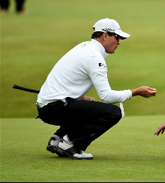 If the previous stroke was made from the Putting Green the original or another ball must be placed on the spot where the previous stroke was made on the Putting Green which if not known must be estimated.
If the previous stroke was made from the Putting Green the original or another ball must be placed on the spot where the previous stroke was made on the Putting Green which if not known must be estimated.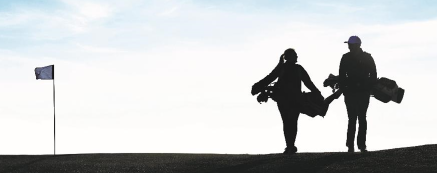 Match Play and Stroke Play are very different forms of play. In Match Play you and your opponent compete against each other based on holes lost, won or tied. In Stroke Play all players compete with one another based on each player’s total scores. In a Scratch competition your “gross score” for the hole or round is your total. In a Handicap Competition your “net score” for the hole or round is your gross score minus your handicap strokes.
Match Play and Stroke Play are very different forms of play. In Match Play you and your opponent compete against each other based on holes lost, won or tied. In Stroke Play all players compete with one another based on each player’s total scores. In a Scratch competition your “gross score” for the hole or round is your total. In a Handicap Competition your “net score” for the hole or round is your gross score minus your handicap strokes. If it is a Handicap Match tell each other your Course Handicap and check your allowance – the percentage of your handicap allowed (100% Difference in singles matches) and decide what holes you will give or receive strokes in accordance with the Stroke Index on the card for the tees you are playing from on a particular course. You are responsible for knowing the holes where you will be receiving your strokes.
If it is a Handicap Match tell each other your Course Handicap and check your allowance – the percentage of your handicap allowed (100% Difference in singles matches) and decide what holes you will give or receive strokes in accordance with the Stroke Index on the card for the tees you are playing from on a particular course. You are responsible for knowing the holes where you will be receiving your strokes.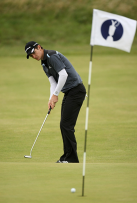 When Putting on the Putting Green there is no penalty in Match Play if you hit another ball on the Green, you replace the ball that was at rest and play the other ball as it lies. In Stroke Play it will cost you 2 penalty shots if your ball hits another ball on the Putting Green so it is important to get the ball marked in Stroke Play if you think your ball might hit it.
When Putting on the Putting Green there is no penalty in Match Play if you hit another ball on the Green, you replace the ball that was at rest and play the other ball as it lies. In Stroke Play it will cost you 2 penalty shots if your ball hits another ball on the Putting Green so it is important to get the ball marked in Stroke Play if you think your ball might hit it.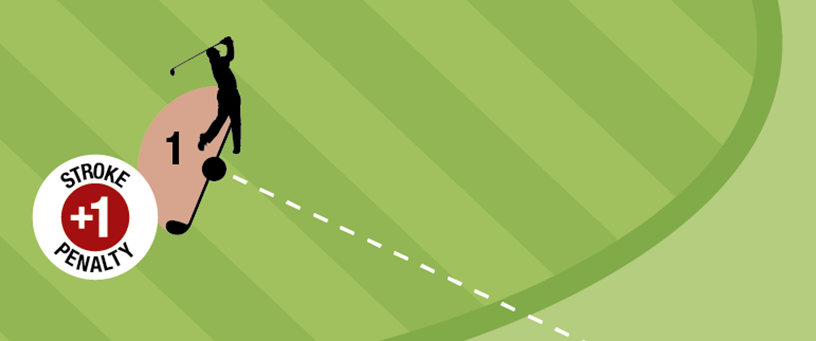 In Stroke Play, if you hit a Wrong Ball, you must go back and try and find the right ball before teeing from the next teeing area. If you searched for 2 minutes before playing the Wrong Ball you have only 1 more minute to search. If you do not find your original ball you have to go back to where you played the previous shot under Stroke and Distance. Total penalty strokes would then be 3 – 2 penalty strokes for playing the wrong ball and one penalty stroke for stroke and distance.
In Stroke Play, if you hit a Wrong Ball, you must go back and try and find the right ball before teeing from the next teeing area. If you searched for 2 minutes before playing the Wrong Ball you have only 1 more minute to search. If you do not find your original ball you have to go back to where you played the previous shot under Stroke and Distance. Total penalty strokes would then be 3 – 2 penalty strokes for playing the wrong ball and one penalty stroke for stroke and distance.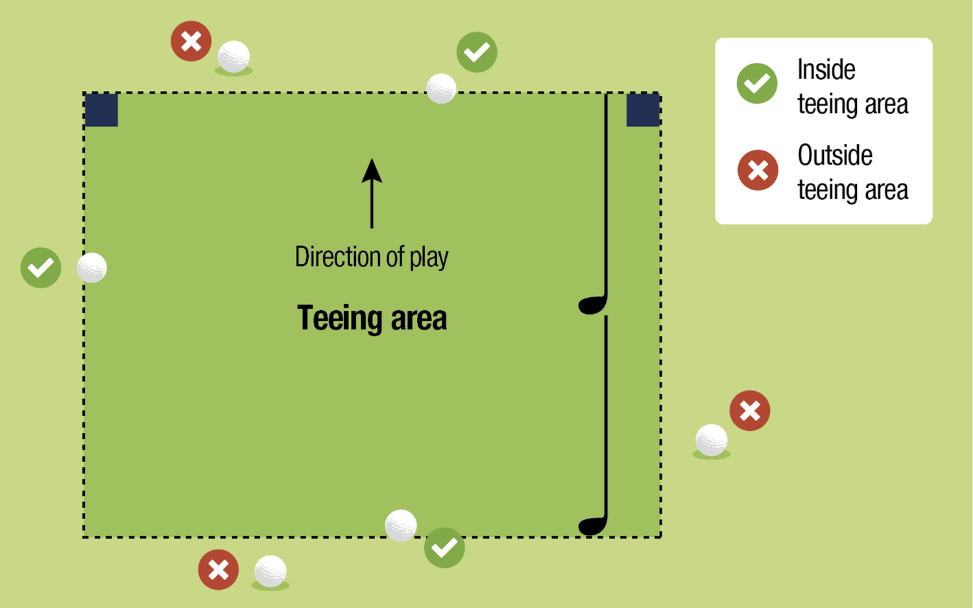 The dotted line defines the outside edge of the teeing area and a ball is in the teeing area when any part of the ball touches or is above part of the teeing area. The player may stand outside the teeing area to play a ball in the teeing area. The ball may be teed or played from the ground. In the teeing area the player may alter the surface of the ground, move bend or break grass and weeds that are attached or growing in the teeing area and remove sand, soil, dew, frost and water in the teeing area. The player must not move the tee-markers when playing from the teeing area or he/she will be penalised 2 strokes for improving the area of their intended swing.
The dotted line defines the outside edge of the teeing area and a ball is in the teeing area when any part of the ball touches or is above part of the teeing area. The player may stand outside the teeing area to play a ball in the teeing area. The ball may be teed or played from the ground. In the teeing area the player may alter the surface of the ground, move bend or break grass and weeds that are attached or growing in the teeing area and remove sand, soil, dew, frost and water in the teeing area. The player must not move the tee-markers when playing from the teeing area or he/she will be penalised 2 strokes for improving the area of their intended swing.